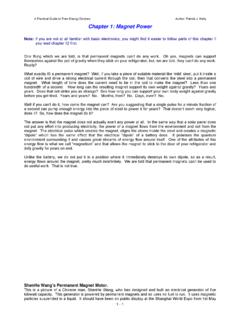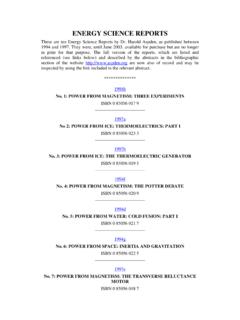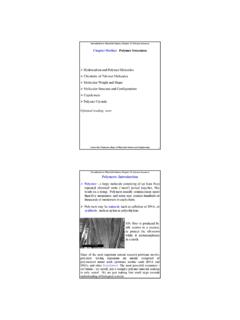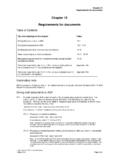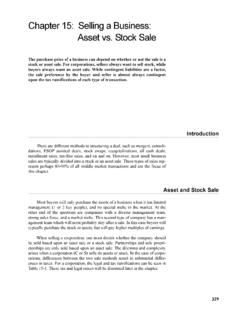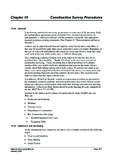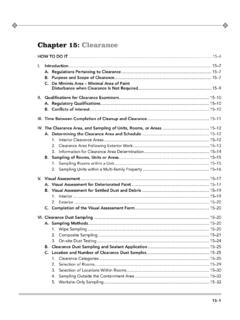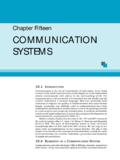Transcription of Chapter 15: An Easy-Build Generator. - free-energy …
1 Chapter 15: An Easy-Build Generator. Many people want a simple project which they can build and which demonstrates free-energy . Let s see if this need can be met. You must understand that most generators, whether free-energy or conventional energy, are not particularly low-cost to make. For example, if you wanted a device which showed that burning a fuel could propel a vehicle, then building a car could do that, but making a car is not necessarily cheap. However, let s see what we can manage here. However, please understand that you, and you alone, are responsible for whatever you do. This presentation is NOT an encouragement for you to make or build anything.
2 It is merely some suggestions which you might find helpful if you have already decided to build something. This means that if you injure yourself, neither I nor anyone else is liable in any way. For example, if you are cutting a piece of wood with a saw and are very careless and cut yourself, then you, and only you are responsible for that you should learn to be more careful. If you drop something heavy on your toe, then you, and only you, are responsible for that. Normally, constructions of this type do not result in any kind of injury, but please be careful if you decide to build. In Chapter 2 of the ebook available free from there is a rotary generator design by Lawrence Tseung which was built by Mr Tong Po Chi and his colleagues.
3 Being an open and straightforward construction, it has been demonstrate publicly, on many occasions as having 330% efficiency, that is, the output power is times greater than the input power. Another way of saying this is to say that it s Coefficient of Performance is (or COP= ). Hopefully, we will achieve much better performance than that in this construction. No drawings in this document are to scale. I suggest that we start by replicating the original design, and then apply some modifications step by step in order to raise the output power. The original construction looks like this: In the version shown above, there are six electrical meters, but those are not necessary and they were included to help when demonstrating the device to members of the public.
4 Built in October 2009, the unit shown has a 600 mm diameter rotor (which is not visible in the photograph). It has 16 permanent magnets mounted on the rotor 15 - 1 rim and 16 air-core coils mounted on the stator, one of which is used as a timing sensor. The coils can be switched to act as either rotor powering coils or as power collecting coils. Initially, power is provided by a small lead-acid battery. The power is applied through the very simple switching style shown in the 1974 patent of Roger Andrews US 3,783,550 where a passing magnet activates the circuit which powers the system. The rotor magnets trigger the operation and the fifteen main coils mounted on the stator can be switched to be either electromagnets pushing the rotor on it s way, or as energy-gathering coils producing a power output.
5 If you are a skilled constructor of new devices, then please excuse me for making so many constructional suggestions aimed at first-time constructors. The main generator components are like this: The wooden planks holding the two sides together, are chosen to be wide enough to give stability, and more importantly, to allow space so that three rotors could be mounted on the axle if using multiple rotors is chosen as one of the various upgrade options. The two stator sides are connected together by sixteen lengths of wooden 15 - 2 plank and to a much lesser extent, by the baseboard. The dimensions of all components will be suggested later, but for the time being, let s concentrate on connecting the stator pieces together properly.
6 Each plank is supplied with a factory cut straight edge top and bottom. The end of the plank supplied has a perfectly square edge, but we have to cut the required length and get a good cut every time. It is easy enough to mark a perfectly square line across the width of the plank, but cutting along that line is not sufficient as the cut needs to be absolutely square as it moves through the thickness of the plank. If the cut isn t properly square, then that face will not form a good fit against the stator piece and the workmanship will be very inferior. For somebody who does not have a cutting table, it is a very good idea to use a mitre box in order to get a good quality cut: The width of the mitre box limits the width of the plank which can be used and a common size for the mitre box channel is just over 90 mm.
7 Allowing the box to guide the saw blade without forcing it and sawing gently, produces a properly square cut in the two planes needed. Planed Square Edge timber is available with a width of 89 mm and thickness 38 mm, and that should be suitable: If we choose to use threaded rod for the axle: 15 - 3 then it is available in various lengths, and while it is perfectly possible to cut it to whatever length is chosen, we might as well pick a 500 mm length and save having to cut a longer length to get what we need. I suggest a 10 mm diameter rod and if the overall length is 500 mm, then the gap between the two stator pieces might be 430 mm and the overall length of timber used would then be 16 x 430 = 6880 mm or feet.
8 However, as it is most unlikely that any timber supplied would be exactly a multiple of the 430 mm chosen, then a slightly greater length will be needed and there will be offcuts. One big advantage of using a threaded rod as the axle is that nuts and washers can be used to clamp a rotor exactly square to the axle and then lock nuts used to clamp it permanently in place. The axle needs to be supported in a low-friction bearing and the most readily available type is the sealed ball or roller bearing: These have a rubber seal to keep dust and dirt out of the grease packed around the ball bearings inside and that spoils the free movement. One way to overcome this has the bearing outer ring clamped stationary and an electric drill used to spin the inner ring until the movement becomes low-friction.
9 A 10 mm inner diameter bearing is often referred to as a type 6200. An alternative method is to remove the rubber seals and remove the grease by immersing the bearing in paraffin (known as kerosene in the American language). Then the ball bearings or rollers inside the bearing are lightly oiled to give a very free-running bearing. The active part of this design is the magnets attached to the outside of the rotor. We need these magnets to be powerful, and the neodymium types generally available are rated as types N35, N45, N50 and N52 with the type N52 being the most powerful. There is a substantial pulling-power difference between the different grades. I would suggest using 20 mm diameter 5 mm thick, N52 grade magnets: 15 - 4 There is no need for the hole in the magnet, but if there is one, then a steel wood screw can be used to help secure the magnets to the edge of the rotor, in addition to glue.
10 Please be very careful when handling these magnets as N52 is so powerful that they can injure you. If you have one in your hand and move your hand within 150 mm or so of another one lying on a bench, the loose one will jump off the bench and try to attach to the one in your hand. Unfortunately, your hand is in the way and the result is painful. If the flying magnet catches the skin at the edge of your hand or finger, then the grip can be strong enough to cause bleeding. Also, when these magnets attach in a roll as shown in the picture above, it can be very hard to pull them apart. The way to deal with the situation is to slide the end magnet sideways as far as possible and then pull it away diagonally from the roll.
